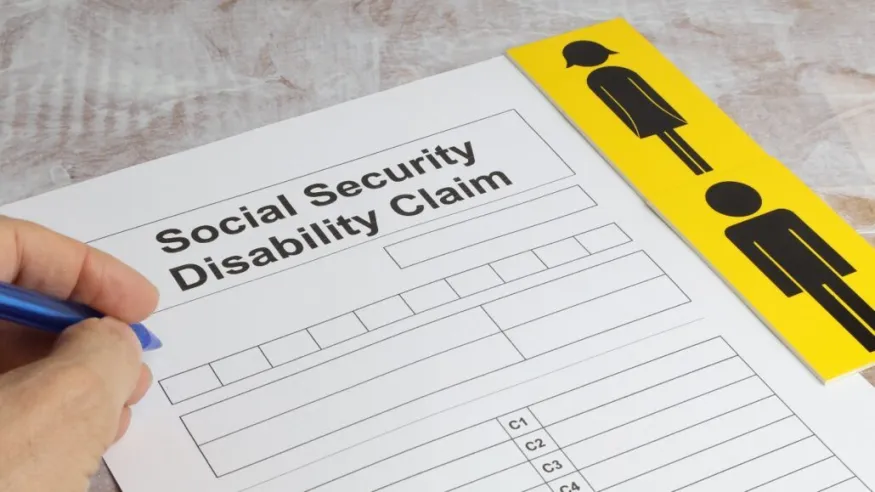 When it comes to Social Security Disability benefits, misinformation can make an already complex process even more challenging. To help you navigate this system with confidence, let’s debunk some of the most common myths surrounding Social Security Disability benefits.
When it comes to Social Security Disability benefits, misinformation can make an already complex process even more challenging. To help you navigate this system with confidence, let’s debunk some of the most common myths surrounding Social Security Disability benefits.
Myth 1: You Must Be Completely Unable to Work to Qualify
One of the most pervasive myths is that you must be completely unable to work to qualify for Social Security Disability Insurance (SSDI) benefits. While it’s true that you need to demonstrate a significant impairment, the reality is more nuanced.
Fact: The Social Security Administration (SSA) defines a qualifying disability as a condition that prevents you from engaging in substantial gainful activity (SGA). This means that if your disability significantly limits your ability to perform your previous work or adjust to other work, you may still qualify for benefits—even if you can perform some level of work, especially part-time or in a different capacity.
- Example: If you worked in construction and suffered a back injury that prevents you from lifting heavy objects, you might still qualify for SSDI, even if you can do lighter work in a different field.
For a free legal consultation, call 800-562-9830
Myth 2: Your Disability Must Be Permanent to Receive Benefits
Another common misconception is that you only qualify for benefits if your disability is permanent. Many believe that temporary or fluctuating conditions automatically disqualify them from receiving SSDI benefits.
Fact: The SSA requires that your disability is expected to last at least 12 months or result in death, but it doesn’t have to be permanent. Conditions that improve over time can still qualify, as long as they are severe enough to meet the SSA’s criteria during the time they affect you.
- Example: A person with cancer undergoing treatment may qualify for SSDI if the treatment and recovery period are expected to prevent them from working for 12 months or more.
Myth 3: The Application Process Is Quick and Simple
Some believe that applying for Social Security Disability benefits is a straightforward process that takes only a short time. Unfortunately, this myth can lead to frustration and confusion when the reality doesn’t match expectations.
Fact: The SSDI application process is often lengthy and complex. It involves detailed paperwork, medical records, and possibly multiple appeals. Many initial applications are denied, and it can take several months to over a year to receive a decision. Understanding this timeline and being prepared for a potentially lengthy process can help set realistic expectations.
Click to contact our disability lawyers today
Myth 4: A Denied Claim Means You Don’t Qualify
If your initial SSDI application is denied, you might assume that you don’t qualify for benefits. This myth can discourage many people from pursuing their claims further.
Fact: The majority of initial SSDI claims are denied. However, a denial does not mean you don’t qualify—it may simply mean that additional information or clarification is needed. While success is not guaranteed, many applicants significantly improve their chances with an appeal, especially when guided by a skilled attorney who can effectively gather and present the necessary evidence.
Example: If your claim was denied due to insufficient medical evidence, an appeal with additional documentation from your healthcare provider could lead to an approval.
Complete a Free Case Evaluation form now
Myth 5: You Don’t Need an Attorney to Apply
It’s often believed that hiring an attorney is unnecessary when applying for Social Security Disability benefits and that individuals can easily navigate the process on their own.
Fact: While it’s true that you can apply for SSDI benefits without an attorney, having legal representation can significantly increase your chances of approval, particularly if your case is complex or requires an appeal. An experienced disability attorney understands the intricacies of the application process, can help gather the right evidence, and ensures that your case is presented effectively.
- Example: An attorney can help you avoid common pitfalls, such as missing deadlines or failing to provide sufficient medical documentation, which often result in denied claims.
Myth 6: Once Approved, Your Benefits Are Guaranteed for Life
Some people mistakenly believe that once they are approved for SSDI benefits, they will receive them for life without any further requirements.
Fact: While SSDI benefits are designed to provide long-term support, they are not necessarily permanent. The SSA conducts periodic reviews to determine if beneficiaries still meet the eligibility criteria. If your condition improves and you’re able to return to work, your benefits may be reduced or terminated.
- Example: If your health improves significantly and you’re able to return to full-time work, the SSA might reduce your benefits after a review.
Myth 7: You Can’t Work at All While Receiving Benefits
A common belief is that if you receive SSDI benefits, you are prohibited from working in any capacity.
Fact: The SSA has work incentive programs that allow beneficiaries to attempt returning to work without immediately losing their benefits. The Trial Work Period (TWP) lets you work for up to nine months within a 60-month period while still receiving full SSDI benefits, regardless of your earnings during those months.
- Example: You might be able to test your ability to work by taking a part-time job while still receiving your benefits during the TWP. If you find that you can’t maintain the job due to your disability, your benefits won’t be affected.
Myth 8: SSDI Benefits Are the Same for Everyone
Some think that all SSDI recipients receive the same monthly benefit amount, leading to confusion when they hear differing figures from other beneficiaries.
Fact: The amount of SSDI benefits you receive is based on your average lifetime earnings before your disability began, not on the severity of your disability. As a result, benefit amounts vary widely from person to person.
- Example: Two individuals with the same disability might receive different benefit amounts because one had higher earnings before becoming disabled.
By understanding the facts behind these common myths, you can navigate the Social Security Disability process with greater confidence and clarity. Remember that accurate information and proper guidance are key to successfully securing the benefits you need.
Call or text 800-562-9830 or complete a Free Case Evaluation form





